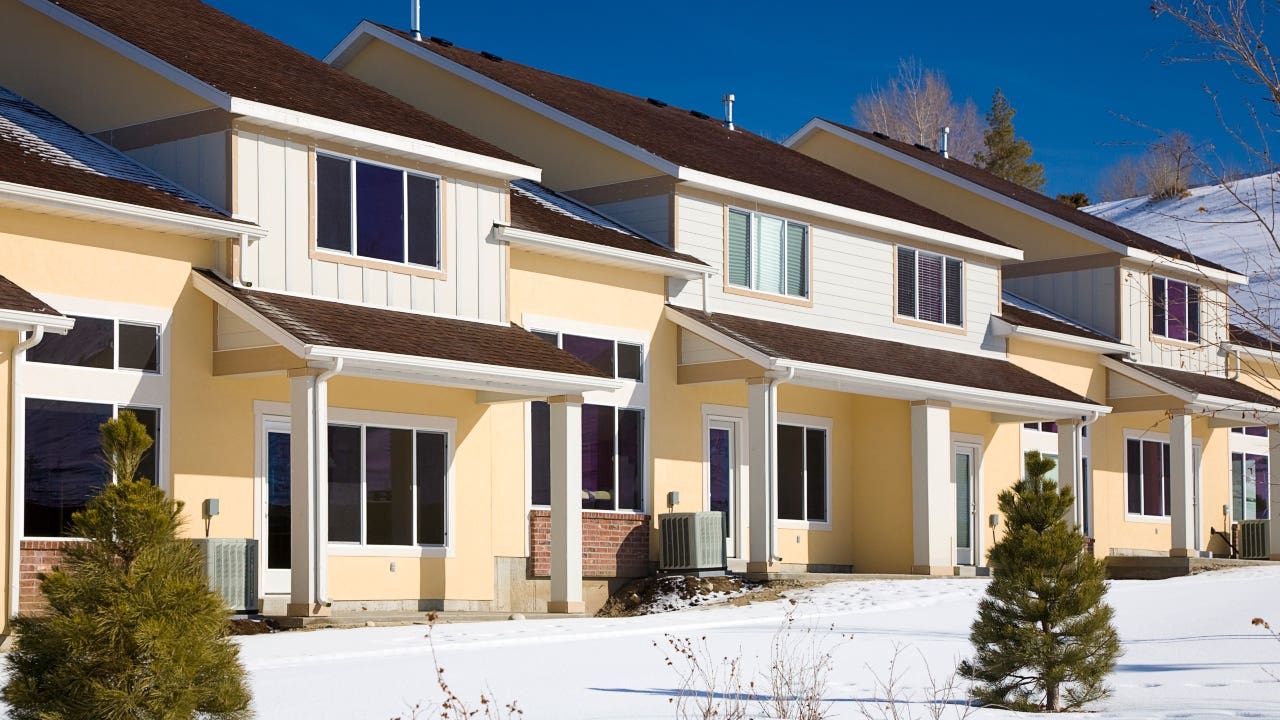What are guaranteed mortgage loans?

The Bankrate promise
At Bankrate we strive to help you make smarter financial decisions. While we adhere to strict , this post may contain references to products from our partners. Here's an explanation for .
Key takeaways
- A guaranteed mortgage loan gives lenders the ability to qualify borrowers with looser eligibility requirements, allowing for lower credit scores, higher debt loads and more.
- Many mortgages with less than 20 percent down are made possible by a guarantee.
- The funds for guaranteed mortgages come from private-sector lenders, but the loan is backed by a guarantor, typically a government agency, that will pay out money to the lender if the borrower defaults.
Guaranteed loans are a critical part of the mortgage marketplace, offering borrowers more flexible qualifying terms. These loans are backed by a third party, most often the U.S. government, who agrees to cover a portion of the loan if the borrower defaults.
What is a guaranteed mortgage?
A guaranteed loan is any loan backed by a party other than the lender. That third party assumes some of the responsibility for the loan to the lender’s benefit. If the borrower stops repaying the loan or defaults, the guarantor pays the lender some or all of the outstanding debt.
Guaranteed mortgages are funded by private-sector lenders, but the loan is backed by a guarantor, usually a government agency that pays the lender if the borrower defaults.
How guaranteed mortgages work
With a guaranteed mortgage, the third party guarantees, or agrees to be responsible for, some or all of the loan if the borrower defaults. The guarantor might extend the guarantee to all or a portion of the loan. The guarantee protects the lender, not the borrower.
Ultimately, the guarantee allows the lender to more confidently qualify a borrower who isn’t making a substantial down payment or otherwise might present more risk, such as having a lower credit score.
8%
Source: National Association of Realtors
Guaranteed loans are most often backed by the U.S. government, namely the Federal Housing Administration (FHA) and the Department of Veterans Affairs (VA), which back FHA loans and VA loans, respectively. The Department of Agriculture also guarantees USDA loans in eligible areas.
One point of distinction: The VA loan program is generally considered a “guarantee,” while the FHA loan program is viewed more as “insurance.” From the borrower and lender’s perspective, however, they each provide third-party backing that helps borrowers qualify for a loan.
Despite the lower down payment, a guaranteed mortgage loan must meet underwriting standards established by the lender and the third party. Lenders often have additional requirements beyond what the guarantor mandates, a practice known as “overlaying.” For instance, the FHA requires a minimum credit score of 580 to allow a borrower to put just 3.5 percent down, but some lenders set the minimum higher, at 620.
Guaranteed vs. non-guaranteed loans
The main difference between guaranteed and non-guaranteed loans comes down to qualifying for the loan. Specifically, a guaranteed mortgage loan means looser eligibility requirements. Because the third party promises to step in if you can’t or don’t repay what you borrow, the lender has a security net. As a result, lenders generally extend looser qualification requirements for a guaranteed mortgage loan — from credit score to income — than with a non-guaranteed loan.
Types of guaranteed home loans
There are various types of guaranteed loan programs available, each with different features and qualifications.
FHA loans
The FHA loan program is popular for several reasons:
- Borrowers can purchase with as little as 3.5 percent down, provided they have a credit score of 580 or better. For borrowers with a credit score between 500 and 579, the program requires 10 percent upfront.
- Borrowers can qualify with a 43 percent debt-to-income ratio (DTI); however, a large portion actually qualify with a higher DTI ratio, sometimes up to 50 percent. This is due to “compensating factors,” such as cash reserves or a higher credit score, that augment a borrower’s creditworthiness.
- FHA interest rates are sometimes lower than those of conventional loans, which aren’t guaranteed or insured by the government.
However, if you choose this kind of mortgage guarantee, be ready to pay two insurance premiums: one premium paid upfront that’s equal to 1.75 percent of the loan principal and an annual premium ranging from 0.15 percent to 0.75 percent of the balance, paid monthly. In some cases (depending on the size of your down payment), the mortgage insurance goes away after 11 years. Otherwise, the annual premium can’t be removed unless you refinance to a different type of loan or pay off your FHA loan completely.
VA loans
VA loans are available to eligible active-duty servicemembers, veterans and surviving spouses to help finance or refinance a home with zero down — a benefit that can be used more than once. The VA guarantee for a home loan promises a certain amount to a lender should a VA loan borrower default.
VA loans give borrowers and lenders a lot of leeway. For example, VA guidelines don’t include minimum credit score standards or loan limits. Instead, lenders set their own credit score requirements and loan money to the extent the borrower is financially qualified.
VA loans also have a residual income standard that helps lenders determine how much a borrower needs, after expenses, to qualify for a loan.
When purchasing or refinancing, VA loan borrowers have to pay an upfront funding fee, although the fee can be waived under certain circumstances.
USDA loans
USDA loans are also available to lower- and moderate-income borrowers with no money down, but only in defined rural areas. (The term “rural” can be surprisingly broad, so check your area to find out if it qualifies.)
A USDA loan has both an upfront and annual fee, which is a percentage of the loan principal, to sustain the USDA guarantee. These fees are charged to the lender but usually passed on as a cost to the borrower.
Pros and cons of guaranteed home loans
As with most forms of borrowing, there are some benefits and drawbacks associated with guaranteed home loans.
Pros
- Lower down payment: A guarantee for a home loan often incentivizes lenders to accept a larger loan-to-value (LTV) ratio, allowing for a smaller down payment — or potentially none at all, if you’re eligible for a VA or USDA loan.
- More favorable rates and terms: Exploring a guaranteed mortgage might help you land a lower interest rate or more favorable terms.
Cons
- Restrictions on use cases: Depending on the guarantor, you might be limited in how you can use the loan. You can only get a USDA loan, for example, if you purchase a home in a qualifying rural area.
- Additional costs: While the guarantee provides protection for the lender, the guarantor might require you to pay into the pot. For example, with an FHA loan, you’ll need to pay for mortgage insurance.
Is a guaranteed loan right for you?
A guaranteed loan may be right for you in certain circumstances, including:
- When you have a lower credit score and cannot qualify for other mortgage programs
- If your income isn’t enough to otherwise qualify for a mortgage
- If you’re seeking more favorable loan terms, such as a lower interest rate
A loan officer can help you determine which option is right for you and what you’re likely to be preapproved for based on your credit and financial situation.
Related Articles



